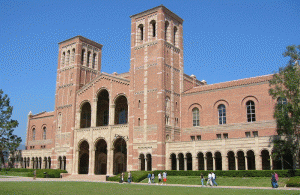CA college costs pinch budgets
 With the University of California system in the midst of a tense tuition standoff, budgets have come under renewed pressure in recent weeks. Not only schools, but students and parents, have felt the pain.
With the University of California system in the midst of a tense tuition standoff, budgets have come under renewed pressure in recent weeks. Not only schools, but students and parents, have felt the pain.
As CalWatchdog.com has been reporting, the UC system has been wracked with a series of fiscal setbacks, some self-imposed. A computer system overhaul designed to save $100 million through a $170 million investment has slipped out of budgetary control, currently two years behind schedule and $50 million in the red.
Meanwhile, UC President Janet Napolitano’s insistence on 28 percent tuition hikes over five years has spurred outrage and opposition from students across the university system as well as push-back from Gov. Jerry Brown, also a UC regent. Fueling the frustration, students and teachers alike have run up against such challenges as covering basic living costs.
Health care woes
As the Los Angeles Times reported, promises made to teachers about health care coverage have begun to go unmet:
“California Common Sense, a nonpartisan research group founded at Stanford University, estimates that state government, cities including San Francisco and Los Angeles and the University of California system contribute to $157 billion in statewide retiree health care obligations. Only about $7 billion has been set aside by those surveyed by the group, leaving $150 billion in debt.”
The problem extends throughout California governments. In a study released last December, Controller John Chiang (now the state treasurer) warned:
“The unfunded liability of providing health and dental benefits for state retirees under the current funding policy is $71.8 billion. The amount represents the present-day cost to provide benefits earned as of June 30, 2014, which is expected to be paid over the lifetime of current and future retirees.
“The total unfunded obligation grew $7.2 billion from the $64.6 billion obligation identified as of June 30, 2013.”
Faced with steep costs of living, including for health care, the student population in the Golden State has embraced the Covered California health exchange — the state’s implementation of the Affordable Care Act, or Obamacare.
According to California Healthline, “Researchers released poll results that show dramatically low rates of uninsured students at California State University campuses, including a steep drop in the number of Latino students without insurance.” Since October of 2013, for instance, enrollment rates at Cal State Los Angeles dropped the uninsured rate from 41 percent to just 10 percent.
Free lunch
Just as students have flocked to subsidized health care, an increasing number have sought out free food options in an effort to balance out the cost of tuition and living expenses.
At some UCs, the cost of room and board alone exceeded $14,000 a year. At UC Berkeley, where housing is the fifth most costly in the nation, according to one survey, the figure topped $15,000.
As Southern California Public Radio reported, over the past four years about half of students polled “said they skipped meals to save money ‘occasionally’ to ‘very often.’
“And at UCLA, officials distributed in the last academic year some 3,884 meal vouchers for students in dire circumstances facing a food shortage. In 2012-2013, it gave out 7,562, and 4,652 the year before that. UC Irvine has budgeted for fewer than 100 in the first year of its voucher program.”
Ironically, SCPR observed, as the result of a hunger initiative spearheaded by Napolitano, most of the UC system’s campuses now offer students the use of food pantries.
Competing priorities
The perfect storm of budgetary strains has made its impact felt in Sacramento, where lawmakers haven’t made up their minds how much more cash to allocate to the UCs.
The most recent addition to the UC system, in Merced, opened its doors in 2005. Yet Assemblyman Mike Gatto, D-Glendale, has proposed a big new investment in yet another campus. According to the Sacramento Bee:
“The Los Angeles Democrat announced a bill Monday that would set aside $50 million for a feasibility study, land acquisition and initial building costs for a ‘UC-Tech’ campus centered on science, technology, engineering and mathematics fields, as well as the arts.
“‘Now when we have these budget surpluses is the time for bold moves,’ Gatto said.”
But in all likelihood, for most Californians in and out of school, the state has already racked up enough unmet obligations.
Related Articles
AB 917 would send charter schools to the back of the class
The popularity and success of California’s 900 charter schools aren’t making everyone happy. Union leaders have tried to organize the
Scam exposed: UTLA wants $ for troubled students to fund 17.6% raise
When Gov. Jerry Brown signed the Local Control Funding Formula for state schools into law in the summer of 2013,
Gitsham among possible CA GOP Congressional ‘Young Guns’
Campaign funding from the national level could flow to California Republicans hoping to land a seat in Congress on election day.




